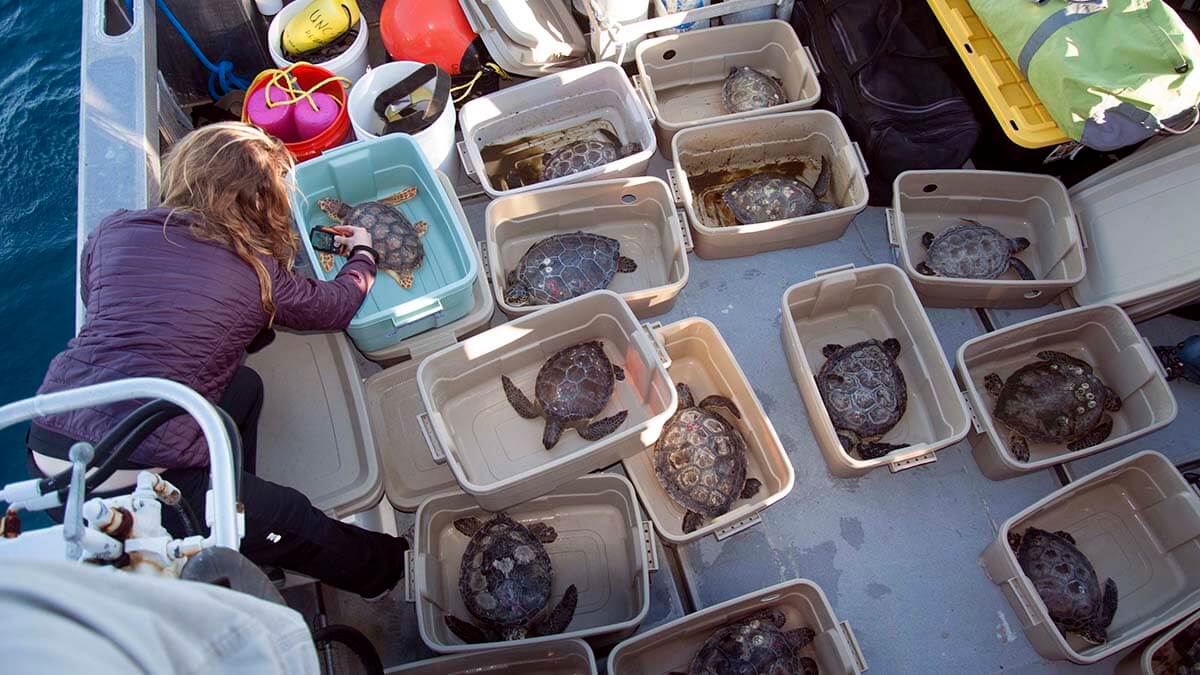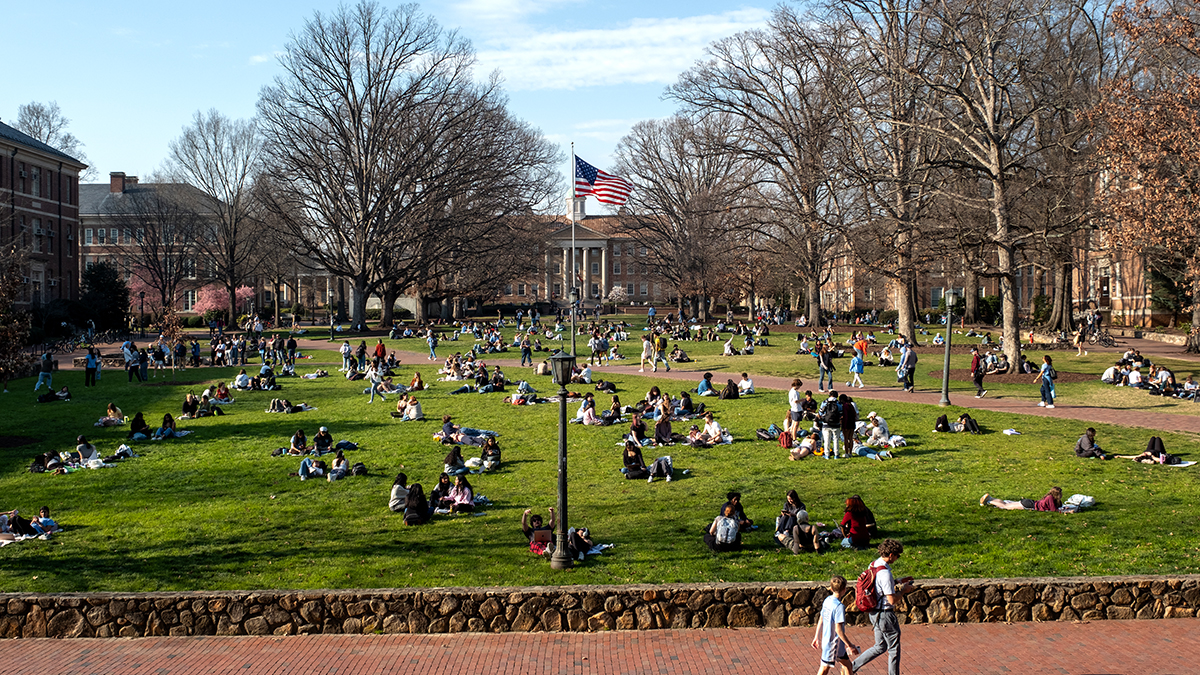Turtle transport
The Peterson Lab provides turtle transport after the cold-stunned turtles are healthy enough to go home.

Marine biologist Avery Paxton was planning an offshore diving trip with her research team at the UNC Institute of Marine Sciences (IMS) in December 2013 when she was asked to carry along some precious cargo: 19 stranded sea turtles trying to get to the Gulf Stream.
After all, it was on her way. The doctoral student’s team was headed to a site with water temperatures more suitable for some recently rehabilitated sea turtles (18 green sea turtles and one loggerhead) that had been found cold-stunned – a potentially fatal condition for a turtle – just after Thanksgiving.
“The turtles had suffered from what would be hypothermia in humans and needed to get back to warmer water. They came to us the morning of the dive, and they were with us for the two-hour boat ride on UNC-Wilmington’s ‘R/V Seahawk,’” said Paxton. Once they reached the right temperature, the team gently lowered the turtles into the water one by one and went about their dive.
The turtles were part of a group found near Hatteras Island and Cape Lookout by National Park Service staff and volunteers after a late November cold snap brought a drop in water temperatures. The cold-blooded reptiles usually travel to warmer water before the winter weather hits, since their body heat is determined by environmental conditions. A drop in temperature can decrease their heart rates, stunning them and making it harder for them to swim.
Veterinarians treated the turtles before taking them to the N.C. Aquarium at Pine Knoll Shores for rehabilitation. By mid-December, one group was healthy enough to be released so they could begin migrating along the Gulf Stream. They just had to find willing transportation.
Matthew Godfrey, biologist and sea turtle program coordinator at the North Carolina Wildlife Resources Commission, heard about Paxton from a colleague and asked if the IMS team was willing to provide the ride.
“It happens every year that we get some hypothermic turtles because our estuaries are good for foraging, but the temperatures can drop quickly and there are only so many inlets. It was great to be connected to Avery because they are going further offshore where there’s warmer water,” he said.
The partnership is more than a one-time thing: in February, five green sea turtles, three loggerheads and one Kemps ridley turtle tagged along with the IMS team for a ride, and another group will join them on a trip in the coming weeks.
Godfrey said cold-stunned turtles were still trickling in after the cold winter. He has 15 to 20 rehabilitating turtles that will need transport in the coming weeks.
“It sounds like a little thing, but it’s a big deal to the turtles,” Paxton said. “We’re lucky to have people at the coast who are so devoted to making sure our endangered species thrive, and it’s wonderful to know that we were able to play a small part in ensuring the safe release of these turtles.”
Paxton is part of Distinguished Professor Pete Peterson’s lab in the Department of Biology, based at Carolina’s IMS in Morehead City. The diving research team – which includes researchers from IMS, UNC-Wilmington and the National Oceanic and Atmospheric Administration – makes regular dives to offshore sites near the Cape Fear area as part of an ongoing study of North Carolina’s offshore reef ecology and the habitats that exist there. This research is supported by funding from the Bureau of Ocean Energy Management.
As Paxton works toward completing her Ph.D., she’ll be in the area diving and doing research for a while. She said the turtles could count on the team any time.
“We’re going to be studying these sites for a year or two, so any time we’re going out there in the winter, we’ll make sure the turtle folks know. If they’ve got any hitchhikers that need a trip to warmer waters, we’ll be here.”




